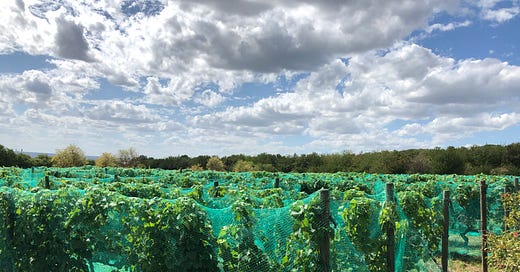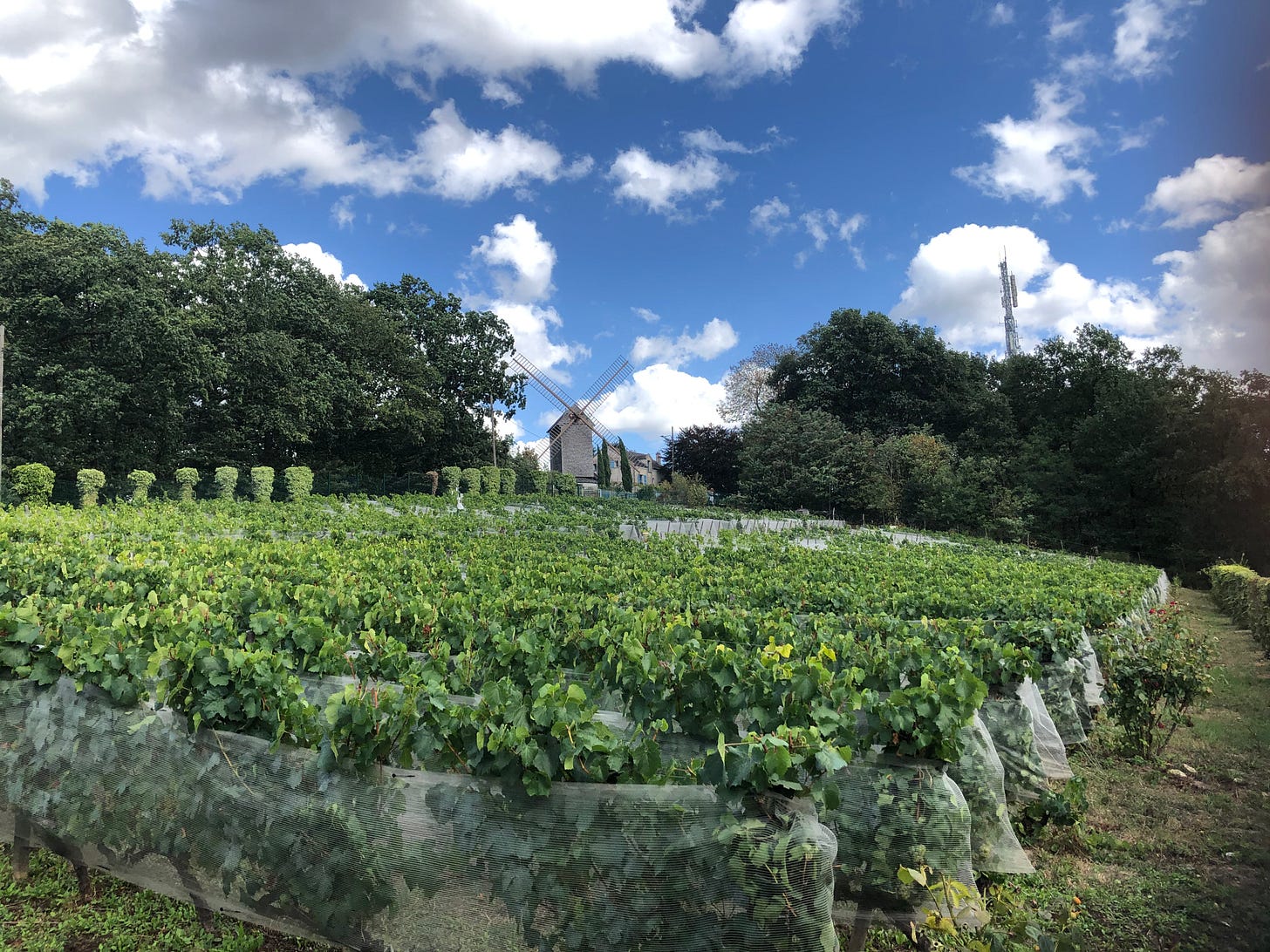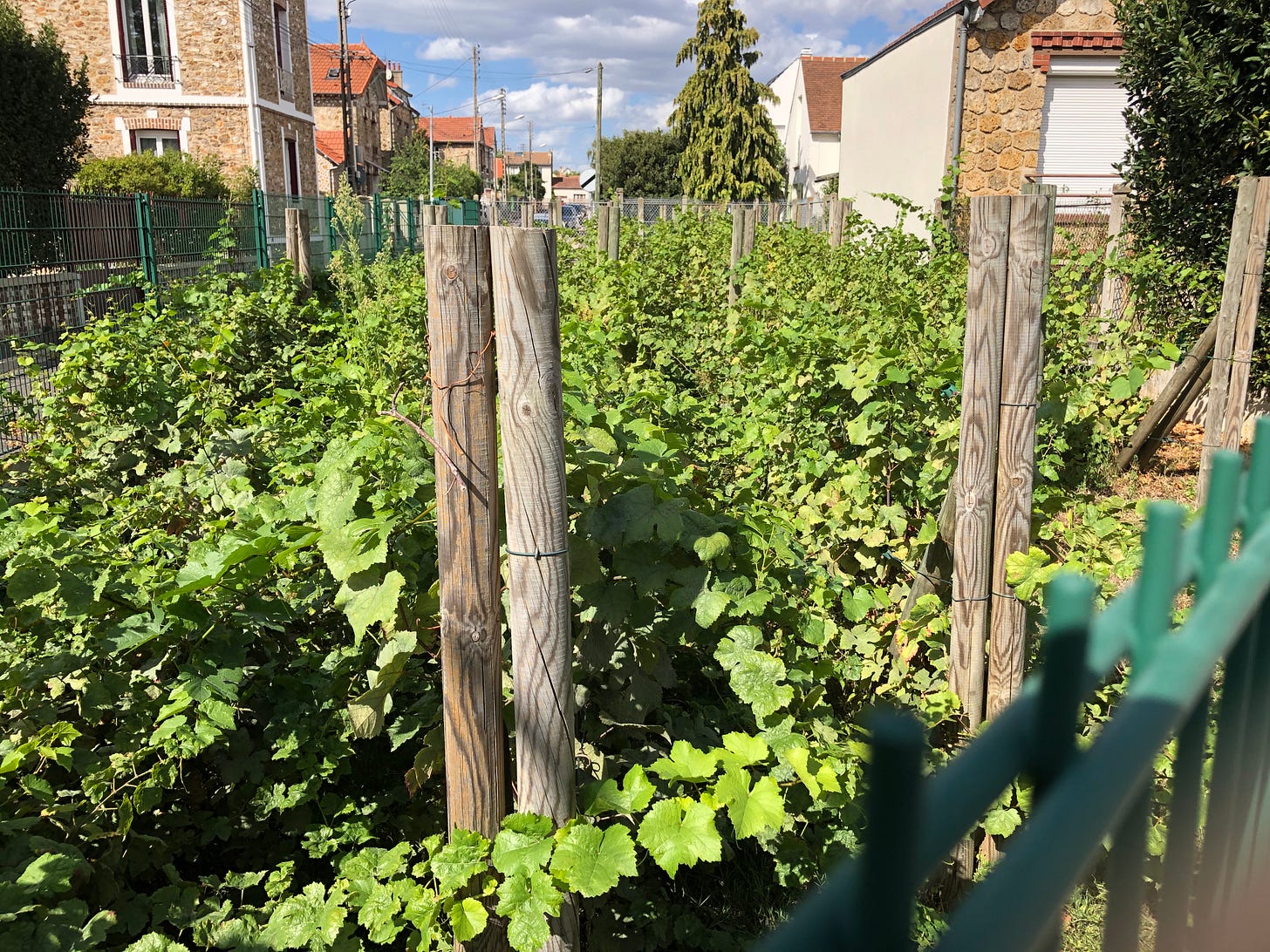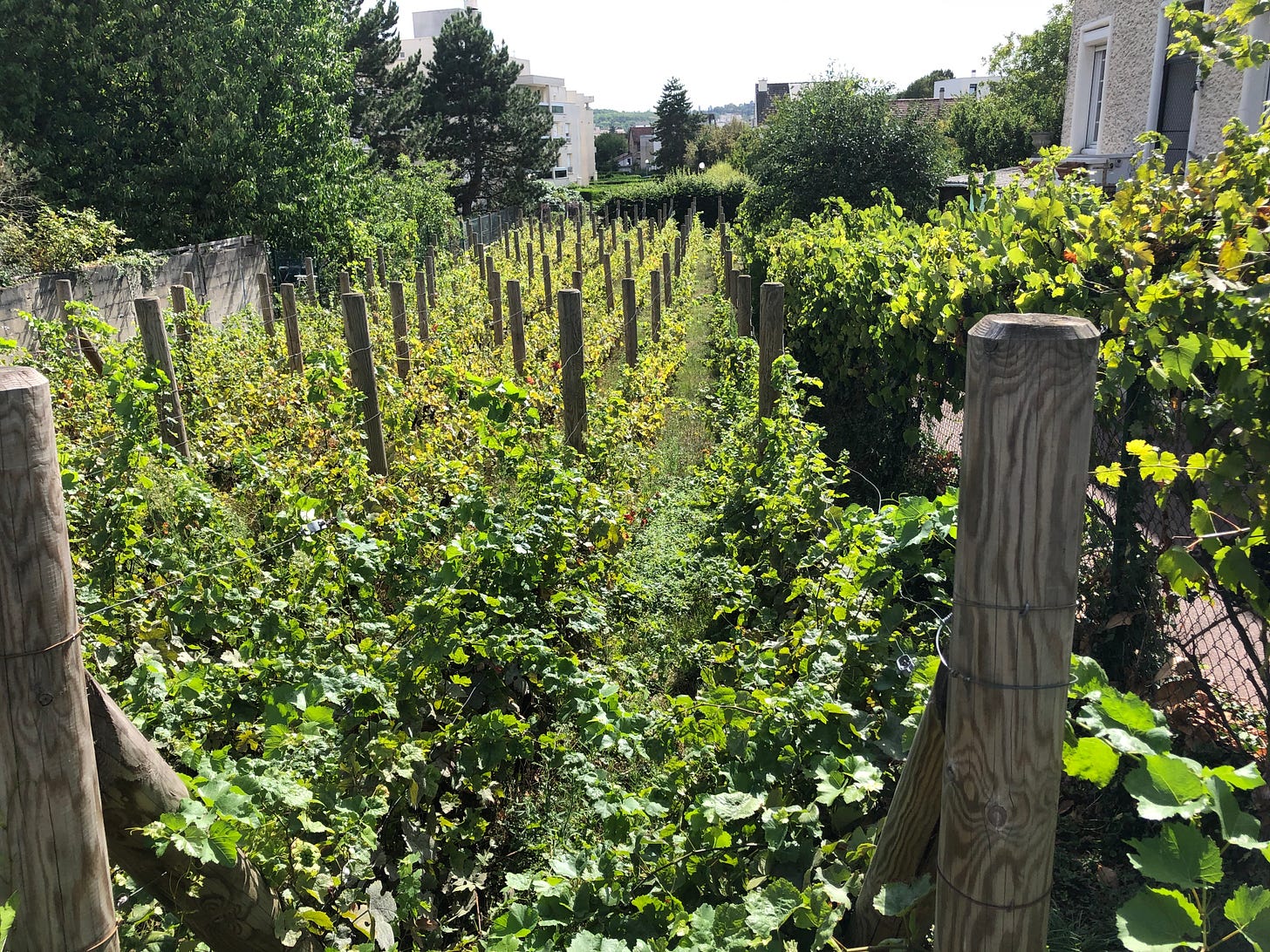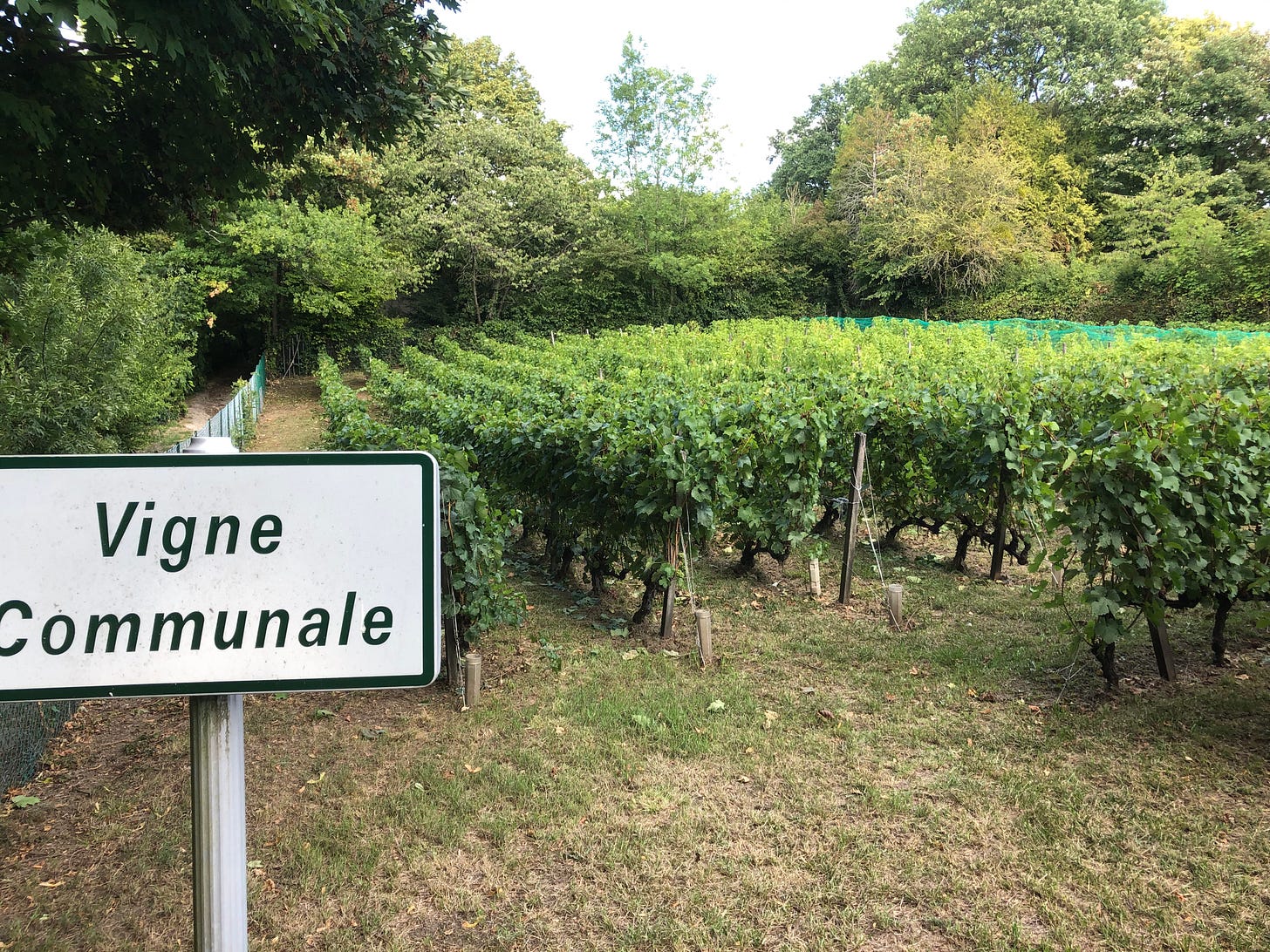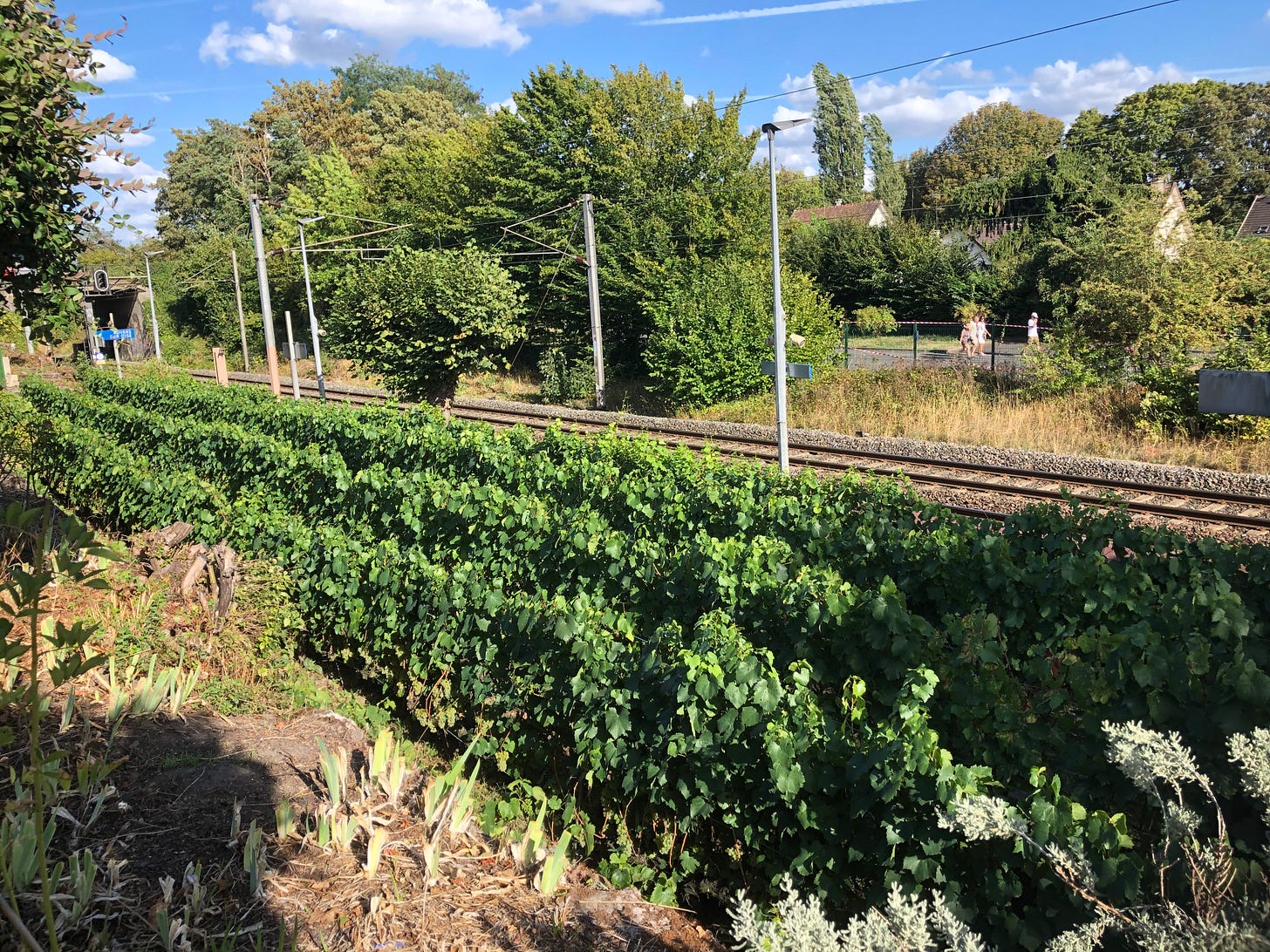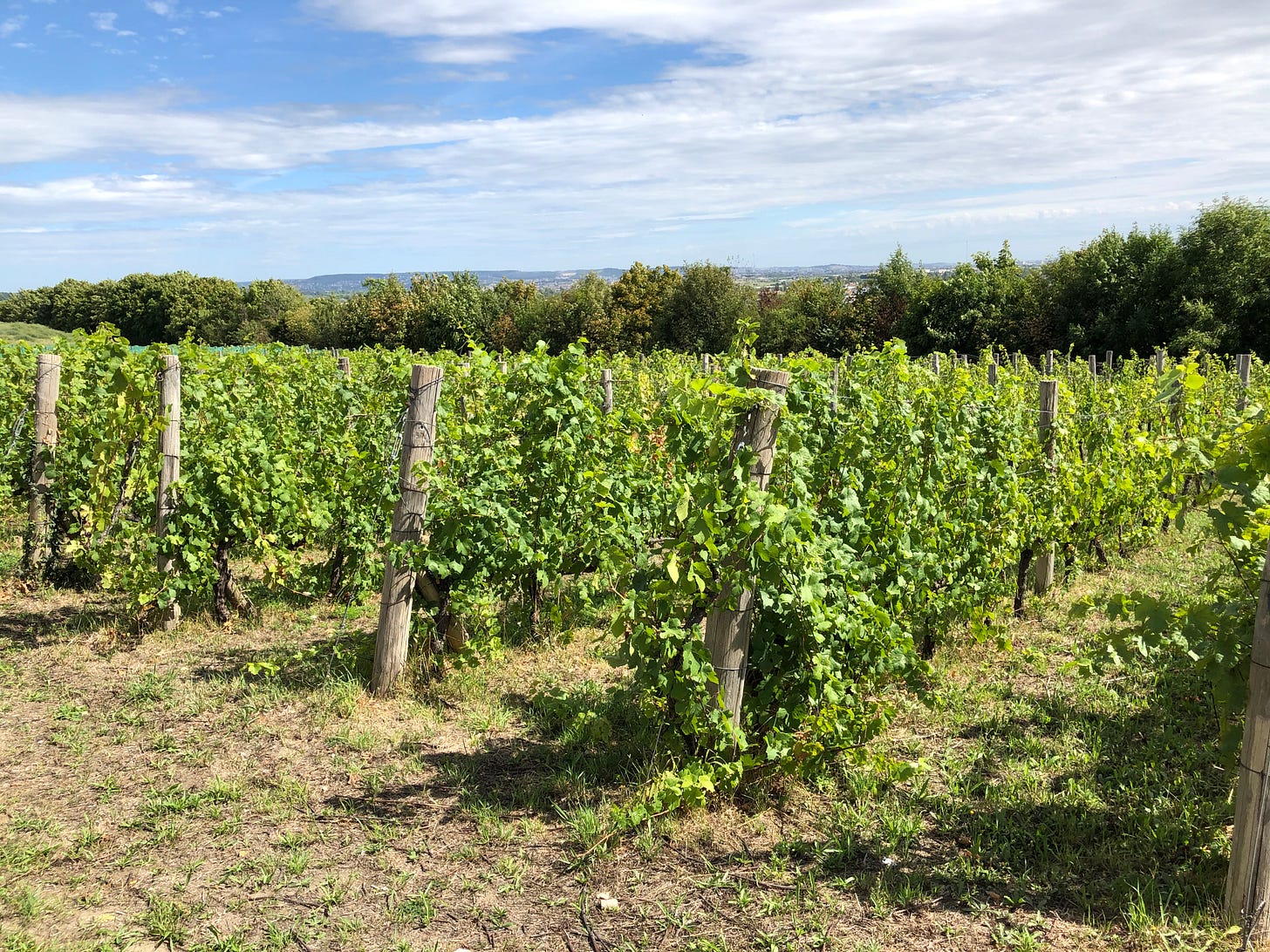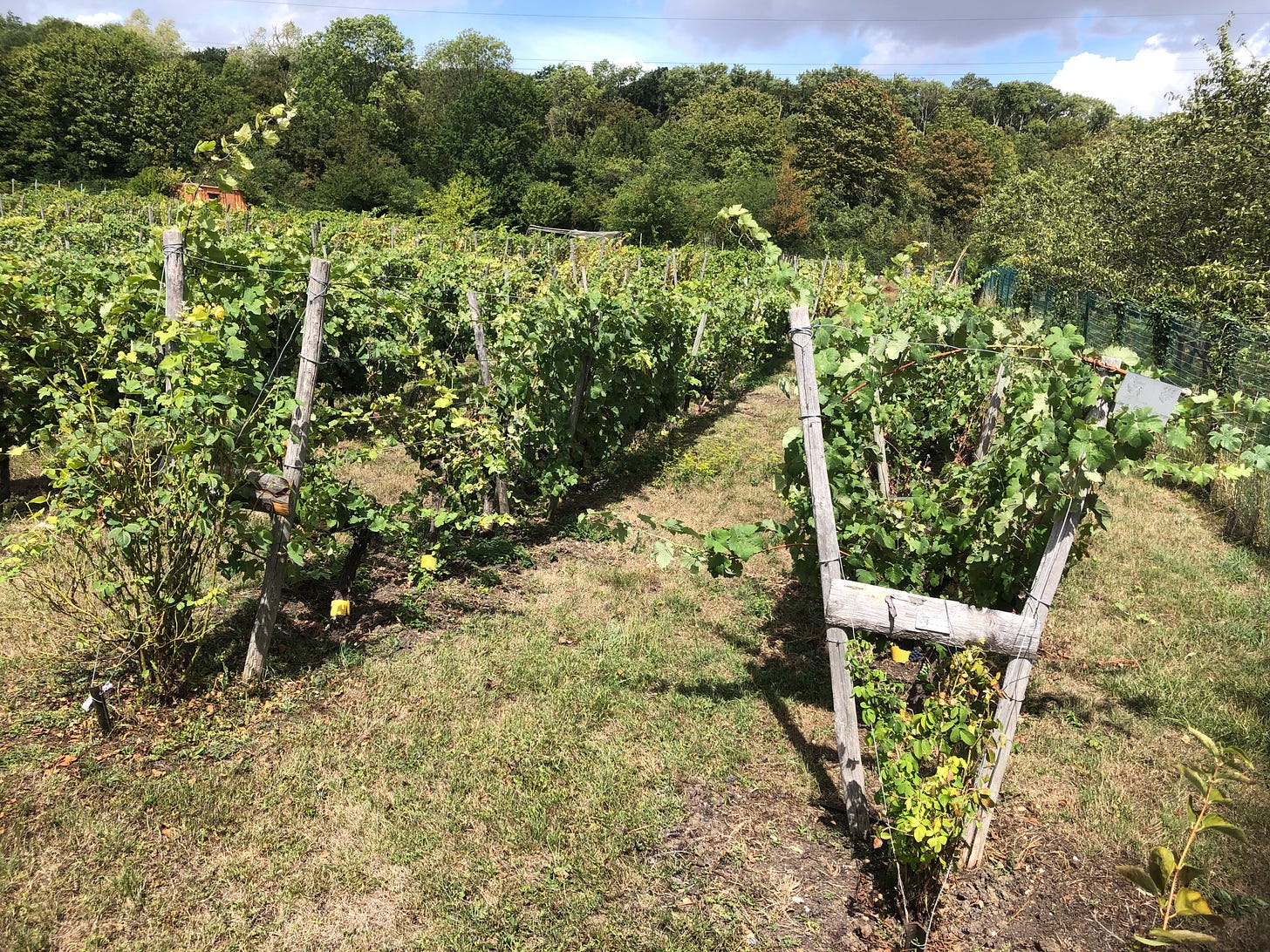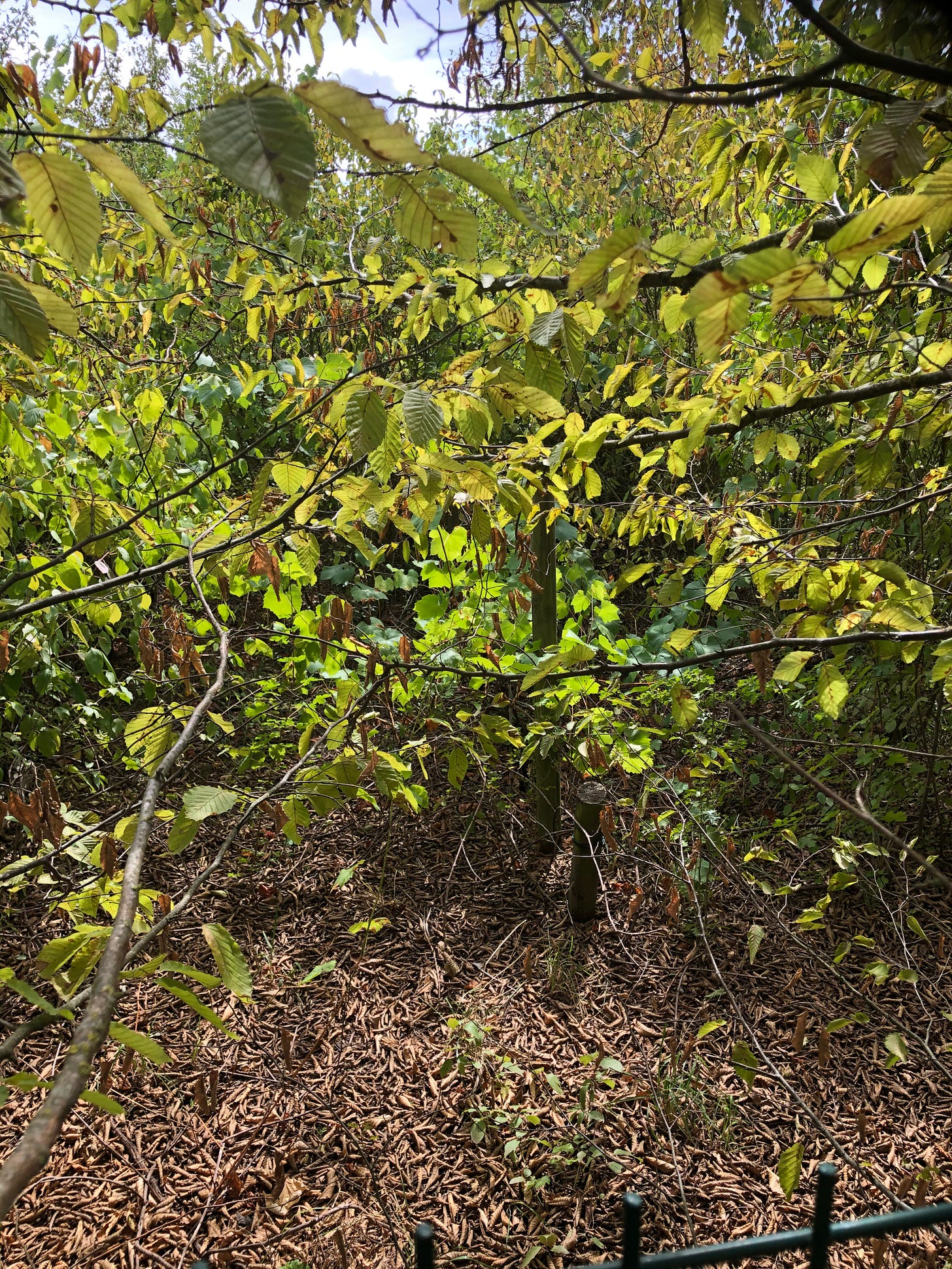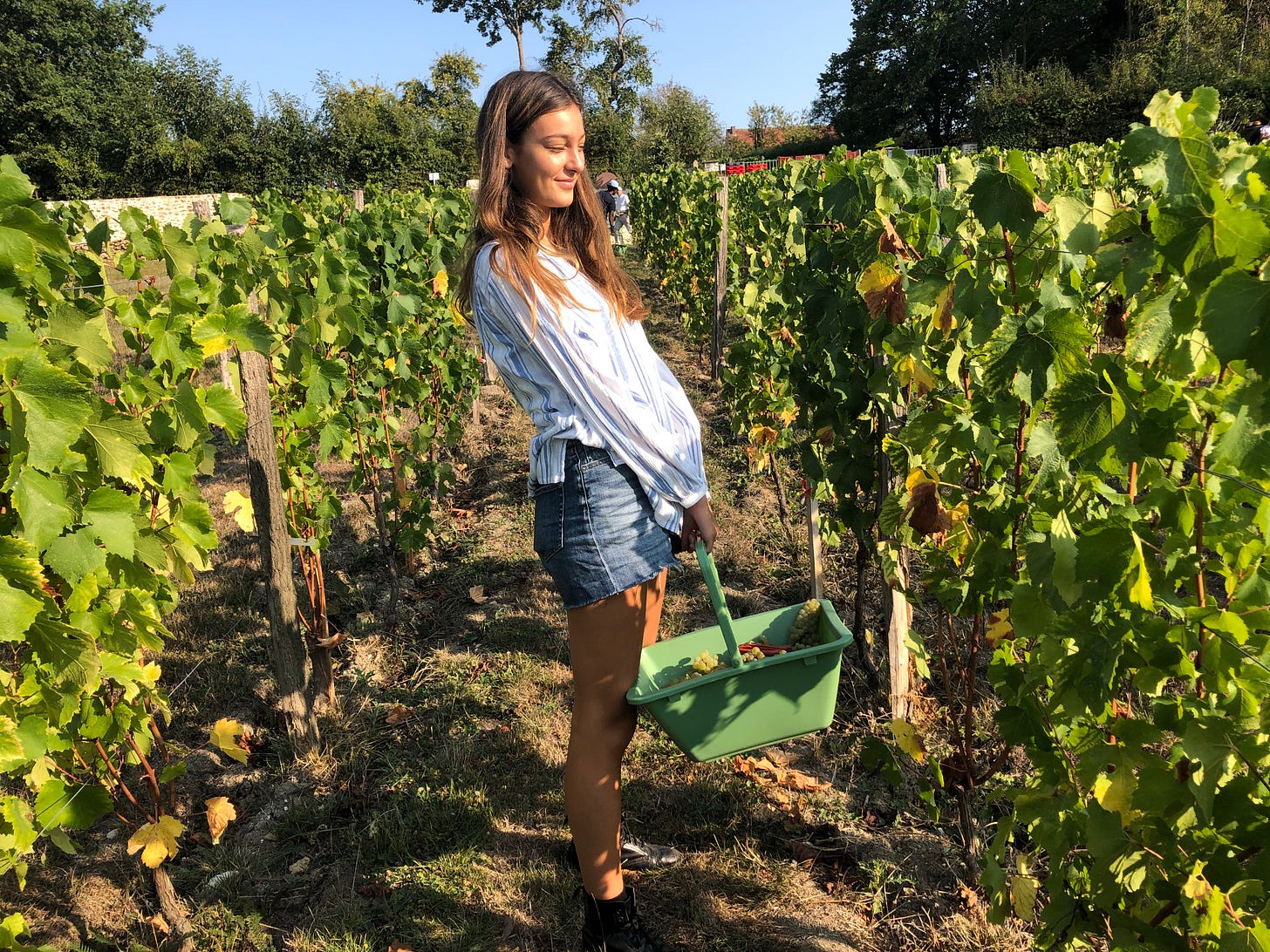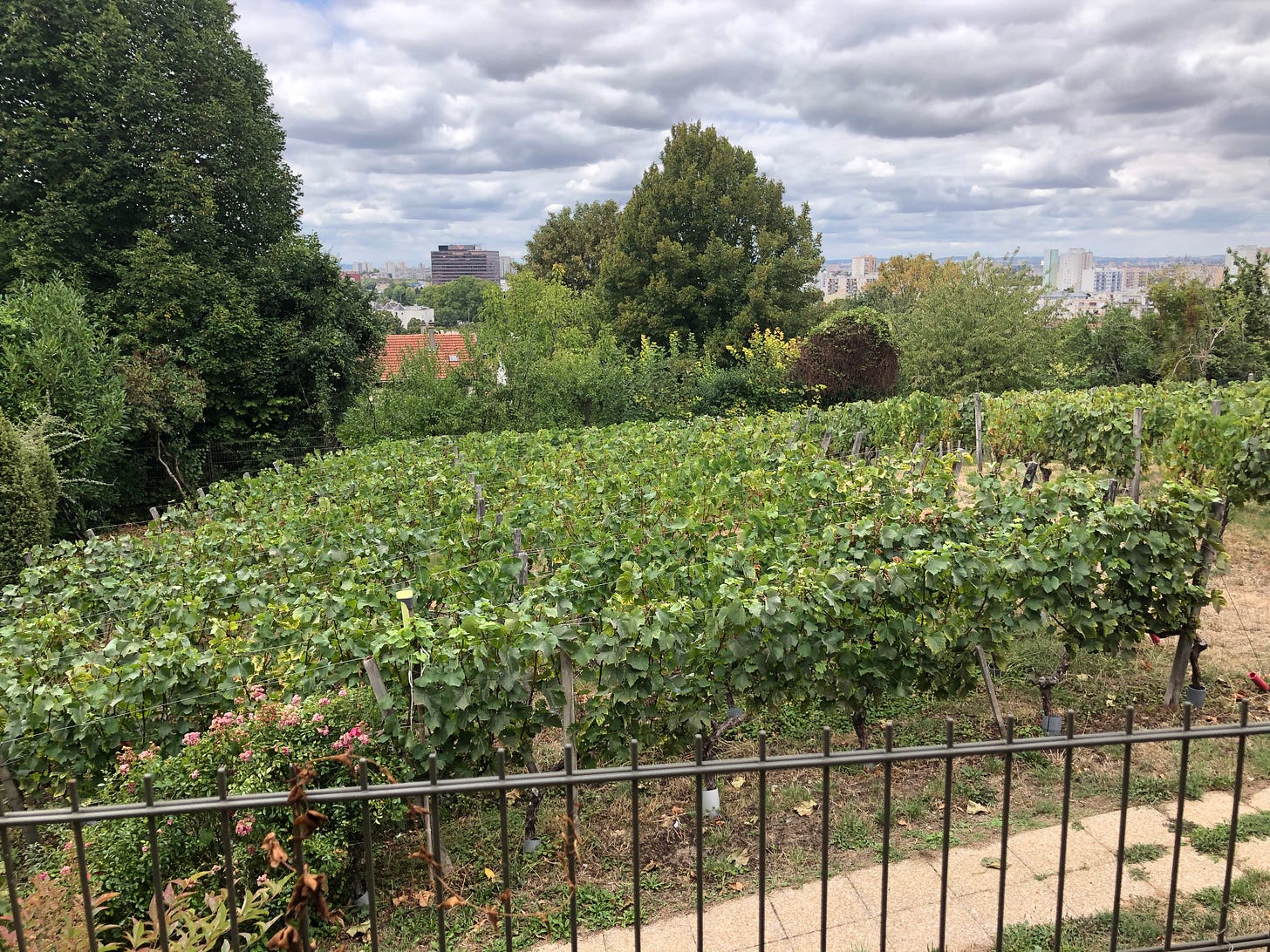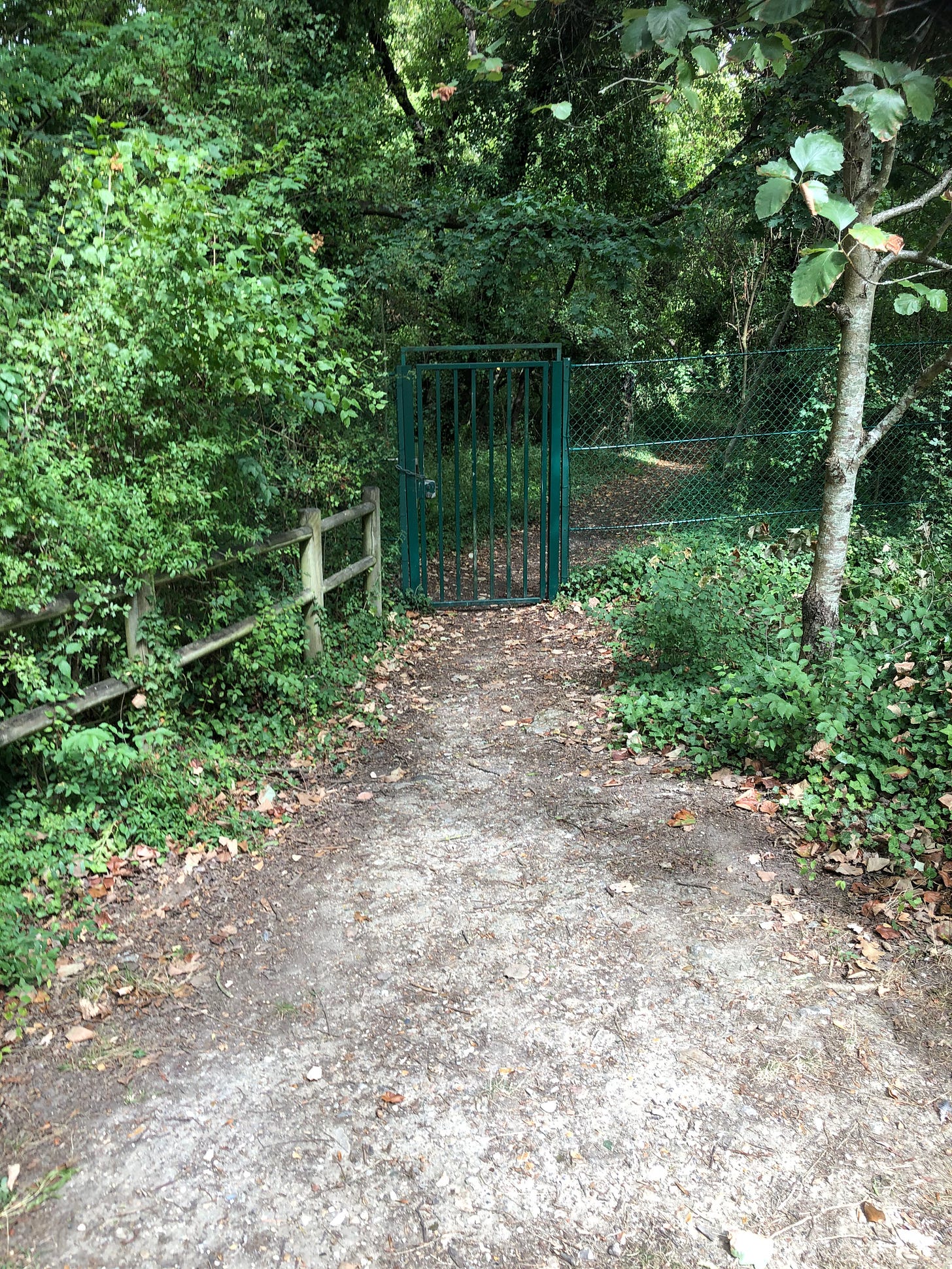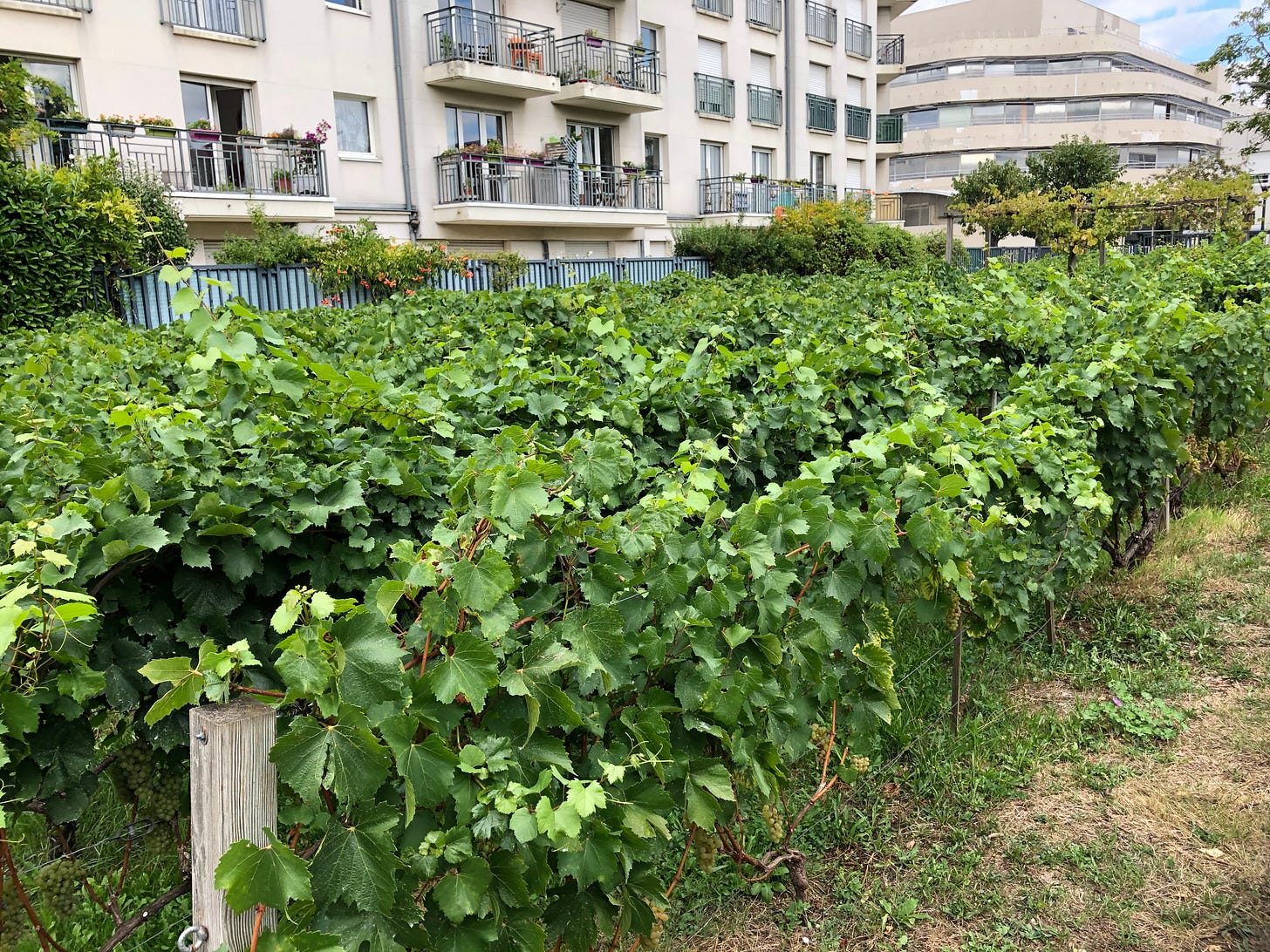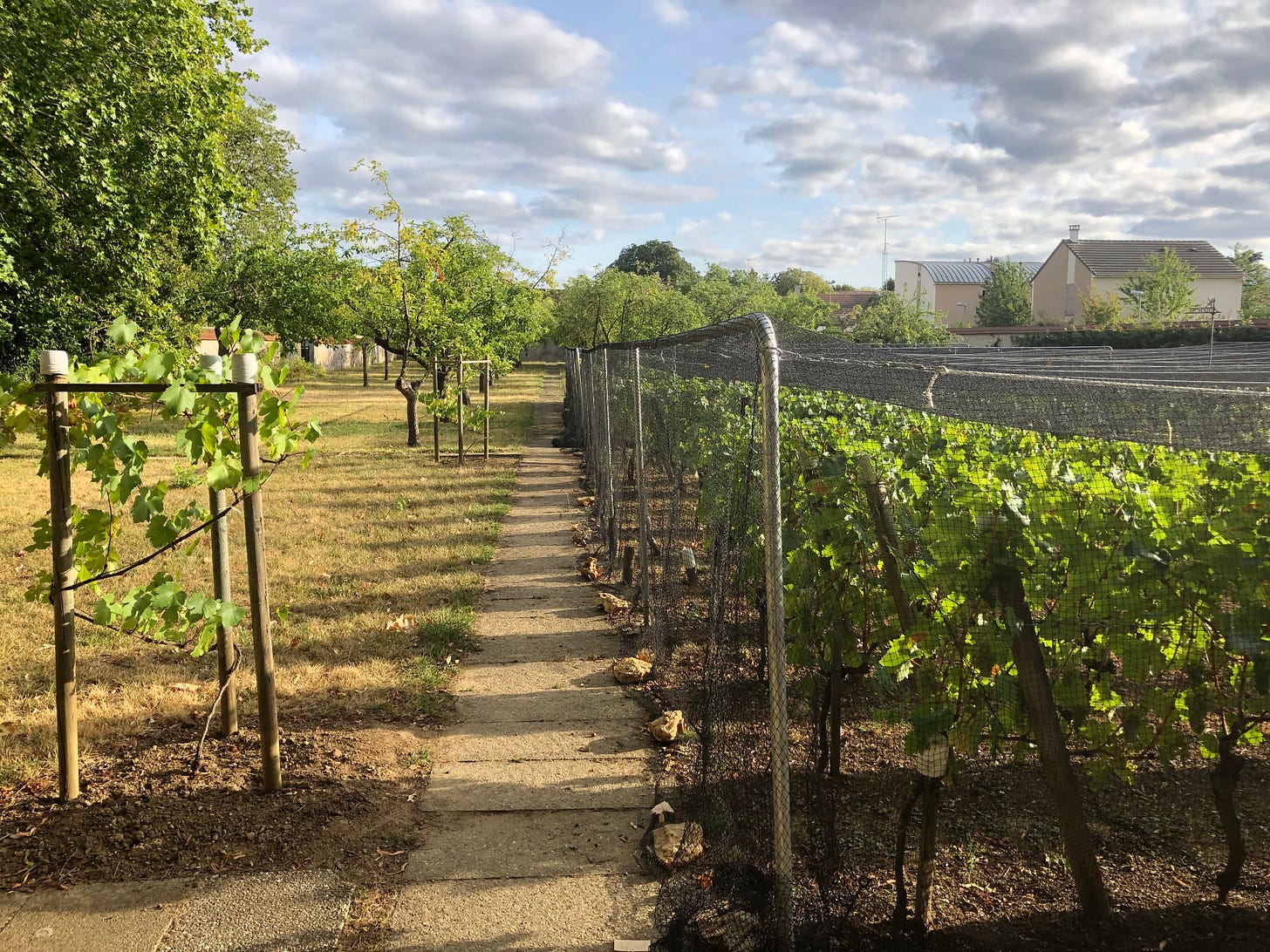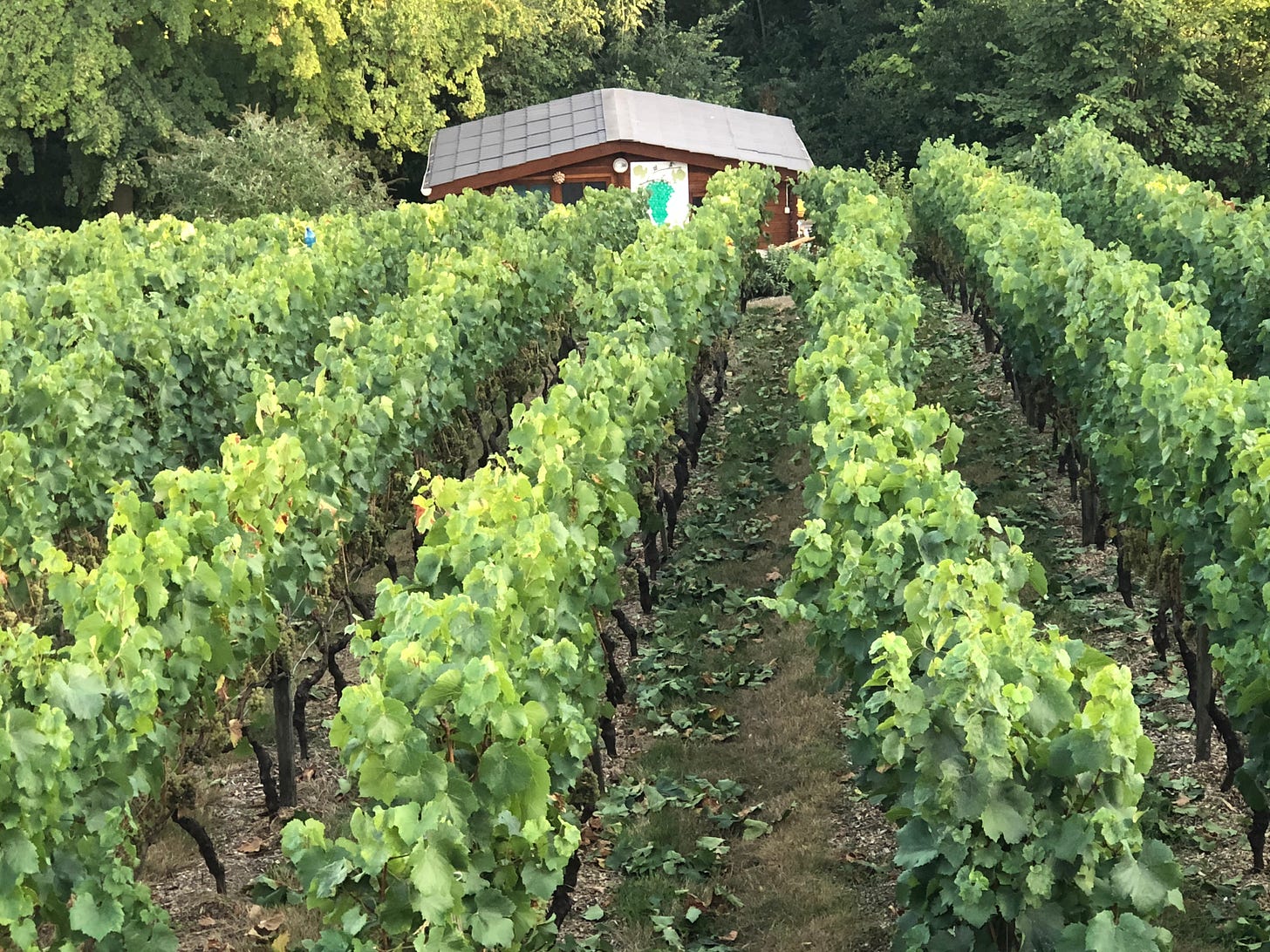This is the second part in a series on the vineyards of the Île-de-France (the Paris region) that have maintained a living link with their municipality’s viticultural history. Once the largest vineyard region (and also the best) in the entire world, the area went into decline for a number of reasons, not least of which were phylloxera and urbanisation, and practically disappeared.
There’s a bit more information on all of that in the first part of this series, which is based on visits I made in 2020 to over 60 of the 140 vineyards that have been flourishing in the region, guarding the memory of this glorious past with vines planted in soils that bore fruit for nearly 20 centuries.
Amidst this historical continuity are newly planted commercial vineyards that are part of the viticultural renaissance of the Île-de-France, embodied in the creation in 2016 of the IGP Île-de-France (Indication Géographique Protégé) that has officially re-established the region as a wine producer, the profiles of which we are gradually introducing in these pages.
Argenteuil (Le Clos Passemay) – The municipality had just taken over the estate of Jacques Defresne, the only winegrower in the commune during the 1970s, whose children did not wish to continue a family tradition that has been unbroken since 1342. Since 1999, the current Argenteuil vineyard has been producing a Pinot Noir and a Chardonnay. Access via rue Buffet.
Sannois - 2,049 vines have been planted at the foot of a windmill on a 3,000 m² south-facing plot of regional land, on the site of a historic vineyard. The mill is impressive.
Ermont - The municipality decided many years ago to carry on its viticultural tradition. Since 1986, the municipality has maintained two plots of vines, one of which belonged to Mr Jouan. The vineyard is fenced off and underwent a complete renovation in 1997. With the help of an oenologist, the original Baco grape variety was replaced with Pinot Noir to improve the quality of the vineyard. Six hundred and fifty vines were planted in 2002. The winemaking process focuses on quality over quantity. Fifty litres are bottled each year. Clos Jouan, 18 Juin Street between 47-49... Clos Ermont, corner of Vignolles Street and Parmentier Street.
Taverny - Inaugurated on 20 November 1993, the vineyard, located on south-east facing slopes, covers nearly 3,000 m2. Four years ago, Pinot Noir was added to the two original grape varieties, Sauvignon and Chardonnay, in order to develop red wine production. The nearly six hundred vines produce around 300 litres of wine, which is not intended for sale but for tasting at local festivals. Vines are up the hill off the Sente de Tartarons, across from the Parc Henri Leyma (place to park), which is close to the Marché.
Auvers-sur-Oise - Although its cultivation was revived by the Auvers wine press only 25 years ago, Auvers white wine ranks among the best wines in the Île-de-France region, according to Cocorico. The vines are right next to the train station. Best access for viewing is on the Quai of the train station.
Saint-Prix - In 2006, the municipality reintroduced vines in the heart of the Sensitive Natural Area. 2,500 Pinot Noir vines (a grape variety suited to the soil) were planted across 2,500 m². In 2009, the first harvest was organised by the association "Le Clos Saint-Fiacre” - Finding this is not easy. It's way up at the top of the town off the rue du Château de la Chasse on the Chemin de la Procession Saint Marc. You need to walk down about 500 metres to find the vineyard, which is opposite a beautiful house.
Coubron - Le Clos de Bréon - The setting for the vineyard, which is rural and removed from town, is pleasant. The vineyard was replanted in the heart of the village, not far from the orchards, in 1997. The 2,200 m² plot, made up of several parcels, allows the vines to grow with ease. The 600 vines are made up of different red and white grape varieties: Pinot Noir, Pinot Meunier and Chardonnay.
Visited Montfirmeil, but the vineyard was overgrown and abandoned.
Guerard – Domaine du Bois Brillant - This is one of the most impressive vineyards of the IDF. Love, passion and energy (and money) are being poured into this enterprise and it shows. At the outer edges of the town, La Maison de la Vigne et du Vin is a surprising, civilising presence. Each parcel has a name and a citation. Dry stone walls have been built for both aesthetic and practical reasons. I have since participated in various events here, including harvest in 2022, and have got to know Daniel Kiszel, the owner quite well. He has been very active in promoting the revival of the IDF as a commercial wine producing region.
Rosny-sous-Bois – The vineyard is in the Jean Decesari park (across from the Hôtel de Ville). Best to visit from above, rue Jules Guesde.
Neuilly-Plaisance - The Vieux Poirier and Bel Air vineyards in Neuilly-Plaisance are located in the heart of the protected Alisiers area, on the Plateau d'Avron in Neuilly-Plaisance. The Vieux Poirier vineyard is carefully maintained by the Association of Naturalists of the Avron Hillsides. I spent about an hour walking around the park trying to find the vineyard, only to discover it is hidden by trees and bushes with fences all around and a locked gate. Nothing to see at all...
Noisy-le-Grand - Chardonnay, Seyval, and Sauvignon grapes are grown on approximately 400 vines planted in 1999 in the Jardin des Artistes. Clos Saint Vincent (off Rue Clos Saint Vincent) celebrated its 20th anniversary in 2019. The vineyard is located in the park on the right side as you come in from the rue Clos Saint Vincent. Fenced and gated, it is easy to see but impossible to visit.
Chelles - Montguichet On my first visit to Chelles there was no one present to speak with, so I meandered about the property on my own. Extensive planting on the plain of Chelles, right next to an organic vegetable garden. The surface area, which was planted in 2019, is 7 hectares with Chardonnay, Pinot Gris, Savagnin, Pinot Noir, and Syrah. On 23 September 2024 I participated in the harvest of the Pinot Gris grapes.
Combs-la-Ville, Confrérie des Compagnons d'Irminon - lovely park but the vineyard is a 'clos' that can be seen through a fence. Arthur-Chaussy park, rue du Chêne.
Yerres, la Grappe Yerroise - Vignoble du Clos Bellevue (named for the street it is on - the rue de Bellevue) is small, in a suburb and inaccessible to the public.
Thank you for letting me into your world and for reading the Paris Wine Walks Substack. Your support is invaluable as are your comments, suggestions, critiques, dreams, thoughts and remembrances. A little encouragement goes a long way, so please consider a paid subscription, which need cost no more than (a cheap) glass of wine per week. Or, book a wine walk!
My book, ‘The Hidden Vineyards of Paris’ (reviewed in Jancis Robinson’s wine blog, the Wine Economist, National Geographic Traveler UK, UK Telegraph) is available for purchase via our website and at anglophone bookshops and wine shops in Paris. You can also find it at the Musée de Montmartre and the Librairie Gourmande.
Wine Walks & Tastings!
Discover the real story of Paris by joining any one of our walking tours, the only natural wine tours in Paris that include vineyard visits!

